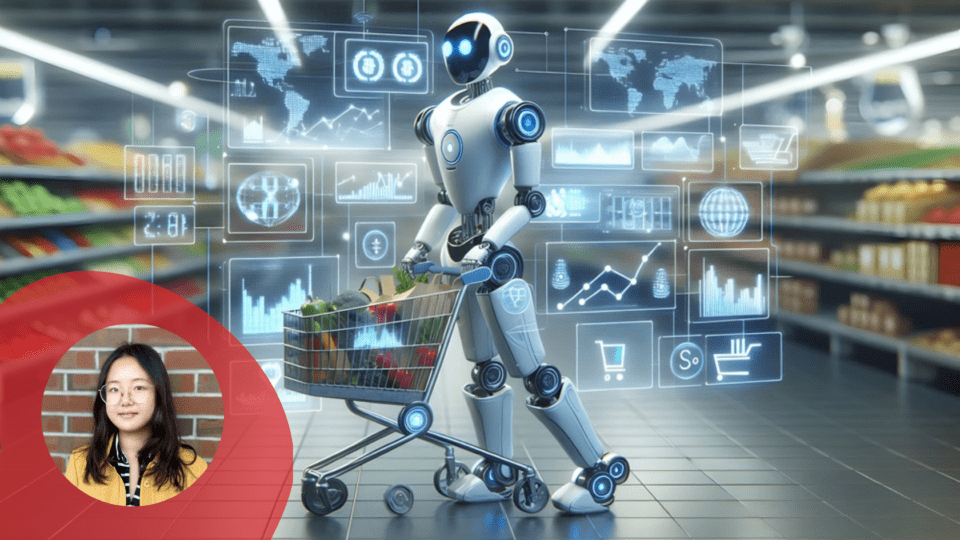Robots and automated technology are becoming a typical feature in the retail industry, with robots streamlining operations, reducing costs and improving customer experiences. From stocking shelves to guiding shoppers, robots are proving their value across various tasks.
However, their effectiveness hinges on more than just advanced technology. With Amazon pulling back on their cashierless stores, we cannot depend on robots to completely take over the retail experience. We need to account for customers with unique needs and establish stronger trust between robots and people to ensure these robotic helpers integrate seamlessly into retail environments.
The message is clear: designing for people first is the key to robots’ usability — and their ultimate success.
The Role of Robots in Retail
In the retail industry, tasks like inventory management, cleaning and even customer service are being delegated to robots, allowing human employees to focus on higher-value activities. For example, shelf-scanning robots can identify out-of-stock items in minutes, and autonomous floor cleaners can keep stores spotless without constant supervision.
While these capabilities are impressive, a poorly designed robot can create frustration for employees and shoppers alike. Imagine a customer struggling to interact with a robot assistant or an employee finding a robotic inventory device cumbersome to operate. These scenarios underscore the importance of human-centered design in the development of retail-serving robots.
Why Human Factors and Ergonomics Matter in Retail Robotics
Human factors and ergonomics (HF/E) studies how people interact with systems, tools and environments. In retail, this principle is crucial when introducing robots to ensure they are intuitive, accessible and safe for everyone.
For example, a robot designed to stock shelves should be able to reach various heights without obstructing aisles or causing discomfort to workers supervising its operation. Similarly, customer-facing robots must communicate clearly and adapt to diverse user needs, from tech-savvy individuals to those less comfortable with digital interactions.
Using User-Friendly Robots
To create robots that fit seamlessly into retail environments, designers must prioritize usability and ergonomics. Retail managers should also work closely with the robot designers and engineers during the design process to provide insight on how the robot should function within the environment and any obstacles or challenges that may appear.
Here are some recommendations from the Human Factors and Ergonomics Society (HFES) for creating a user-friendly robot:
- Intuitive interfaces: Robots should feature easy-to-use interfaces, such as touchscreens with clear instructions or voice-activated commands that cater to a wide range of users.
- Ergonomic form factors: A robot’s physical design should align with its environment. Compact robots that navigate narrow aisles or humanoid designs that put customers at ease are examples of ergonomic considerations.
- Task adaptability: Robots should handle multiple retail tasks, such as restocking shelves and guiding customers, while minimizing disruption to the store layout or workflow.
Effectively Implementing Robots in Retail Stores
With HF/E in mind, retail managers can prioritize processes to ensure robots and automated technology are usable, predictable and safe, so that customers can trust that the robot can help them while shopping. Here are key recommendations from the HFES on creating a human-first retail environment:
- Enhancing training and integration: Ergonomically sound robots can still fail if employees are not adequately trained to use them. Training programs should focus on familiarizing staff with the robot’s functions and capabilities, teaching safe practices to avoid injuries or mishaps as well as demonstrating how robots can complement, rather than replace, human efforts.
- Ensuring adoption: Clear benefits, such as reducing repetitive strain injuries for employees or enhancing customer service through quick and accurate responses, can build trust.
The Future of Ergonomics in Retail Robotics
As robotics technology evolves, the focus on ergonomics will only grow. Innovations like AI-driven personalization, adaptive physical designs and collaborative robots (cobots) are making human-robot interaction smoother and more natural. Future retail environments will likely feature robots that seamlessly adapt to customer needs, store layouts and employee workflows.
Retail robotics is transforming the way we shop, but its success depends on how well robots fit into human-centered environments. By prioritizing usability and ergonomic design, retailers can ensure that robots become indispensable allies in creating efficient and enjoyable shopping experiences.
Dr. Yue Luo is an Assistant Professor from the Department of Industrial and Systems Engineering at San José State University, and a member of the Human Factors and Ergonomics Society (HFES). She is the lab director for the Biomechanics, and Ergonomics in Environment-Persons Interaction and Collaboration Laboratory (BE-EPIC) Lab. Her research focuses on human-centered evaluation in multi-agent systems. This includes assessment of physical and physiological interactions between non-human agents (e.g. robots and autonomous vehicles) and individuals from diverse demographics (e.g. older adults).








